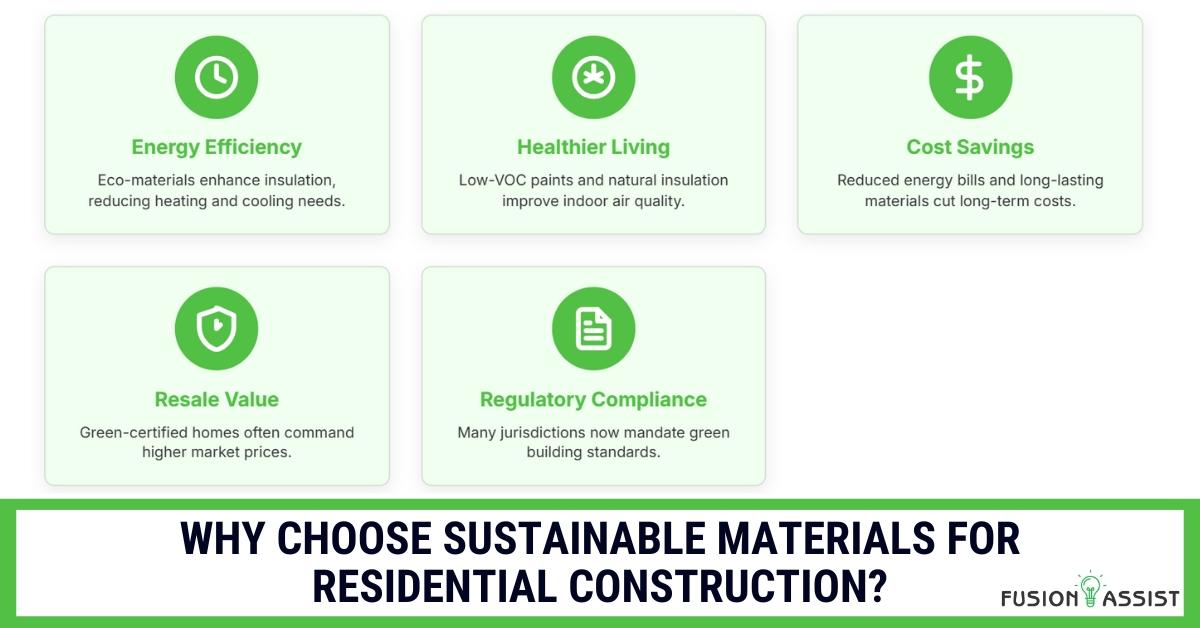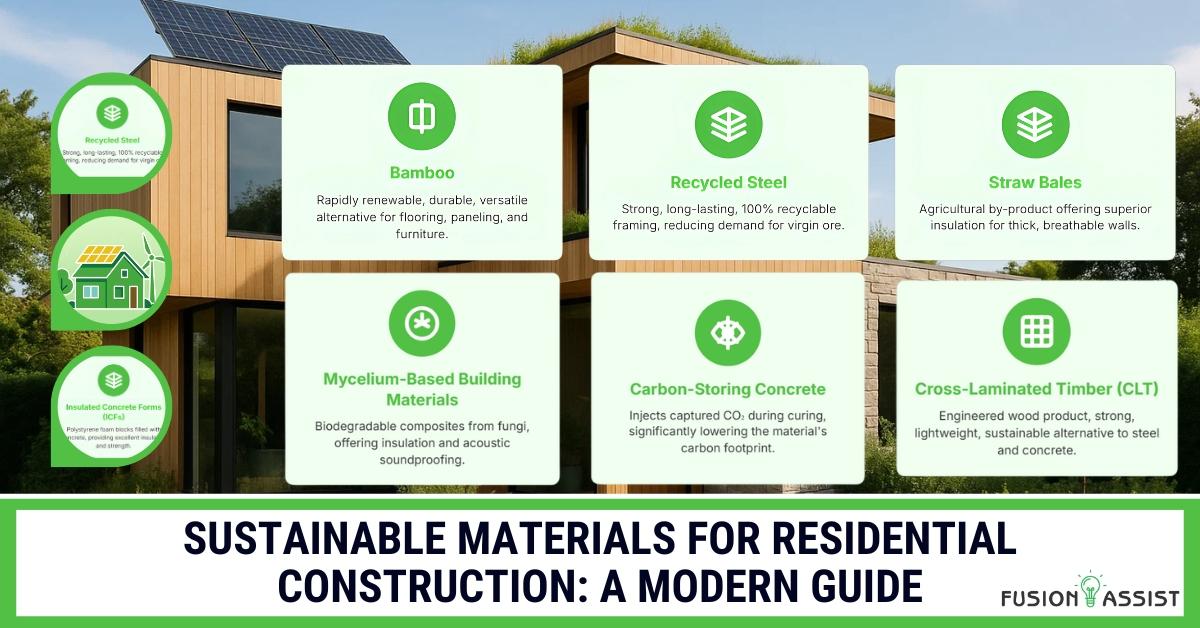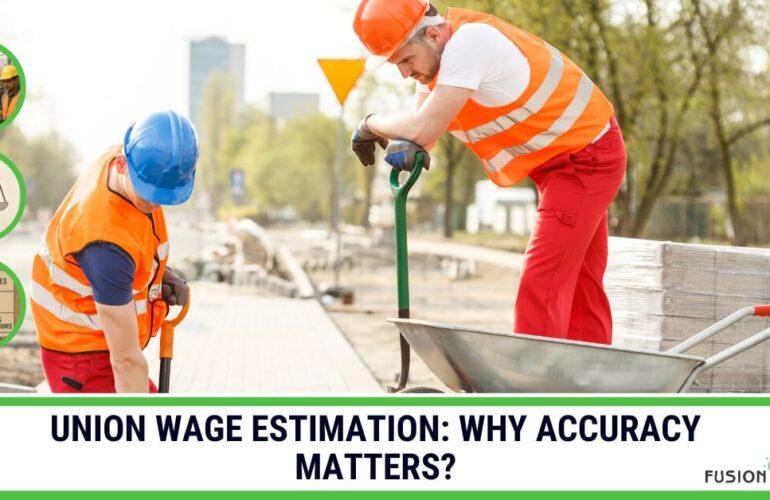Introduction
The global push toward sustainability has transformed the construction landscape, especially in the residential sector, where homeowners increasingly demand eco-friendly materials that reduce carbon footprints, lower energy bills, and create healthier living environments. Sustainable residential projects conserve natural resources and elevate property value and marketability.
Today’s eco-conscious consumers are more informed, placing greater pressure on developers, architects, and contractors to integrate green practices. The growth of programs like LEED (Leadership in Energy and Environmental Design) and WELL Certification shows the industry’s evolution toward transparency, accountability, and performance. This article explores today’s most effective eco-friendly materials, explains their benefits, and illustrates real-world applications through detailed case studies. By understanding these options, builders, architects, and homeowners can make informed choices that align with green-building best practices and long-term cost savings.
Understanding Eco-Friendly Materials
Defining Eco-Friendly Construction Materials
Eco-friendly materials—sometimes called green building materials—are products whose sourcing, manufacturing, usage, or disposal minimizes environmental impact. They typically exhibit one or more of the following characteristics:
- Low embodied energy or carbon footprint
- High recycled or rapidly renewable content
- Non-toxic, low-VOC (volatile organic compound) emissions
- Durability that extends service life and reduces replacement frequency
- Ability to improve indoor environmental quality or energy efficiency
Why Choose Sustainable Materials for Residential Construction?

The choice of building materials significantly impacts a home’s environmental footprint. Here’s why sustainable options are gaining traction:
- Energy Efficiency: Many eco-materials enhance insulation, reducing heating and cooling needs
- Healthier Living: Low-VOC paints and natural insulation improve indoor air quality
- Cost Savings: Reduced energy bills and long-lasting materials cut long-term costs
- Resale Value: Green-certified homes often command higher market prices
- Regulatory Compliance: Many jurisdictions now mandate green building standards
Key Benefits of Using Sustainable Materials
- Reduced environmental impact: Lower greenhouse-gas emissions and less waste generation throughout the product lifecycle.
- Improved energy performance: Many green materials enhance insulation or thermal mass, helping cut utility costs.
- Healthier living spaces: Low-VOC products improve indoor air quality, reducing allergies and respiratory issues.
- Enhanced property value: Buyers increasingly favor homes built with sustainable materials, boosting demand and resale potential.
- Compliance with green certifications: Programs such as LEED, WELL, and Passive House reward projects that prioritize eco-friendly products.
Top Sustainable Materials for Residential Construction
1. Bamboo
Overview
Bamboo is one of the fastest-growing plants, maturing in 3–5 years. It is a renewable, durable, and versatile alternative to traditional hardwoods.
Applications
- Flooring
- Wall paneling
- Furniture
- Structural framing (engineered bamboo)
Advantages
- High tensile strength
- Pest-resistant (when treated)
- Renewable and biodegradable
Limitations
- Requires chemical treatment to prevent rot and pests
- Limited local availability in some regions
2. Recycled Steel
Overview
Recycled steel framing is strong, long-lasting, and reduces the demand for virgin ore extraction.
Applications
- Framing and beams
- Roofing panels
- Doors and window reinforcements
Advantages
- 100% recyclable
- Fire- and pest-resistant
- Extremely durable
Limitations
- High embodied energy if not regionally sourced
- Requires specialized labor for installation
3. Straw Bales
Overview
Straw bales from agricultural by-products are excellent insulators and form thick, breathable walls.
Applications
- Load-bearing and infill wall systems
- Natural insulation
Advantages
- Superior insulation (R-30 to R-35)
- Inexpensive and renewable
- Biodegradable
Limitations
- Susceptible to moisture without proper sealing
- Not suitable in high-humidity zones
4. Reclaimed Wood
Overview
Reclaimed or salvaged wood is harvested from old buildings, barns, or fallen trees, reducing demand for virgin Timber.
Applications
- Flooring
- Beams and trusses
- Cabinetry and accents
Advantages
- Unique aesthetics
- Carbon-neutral or carbon-negative
- Reduces landfill waste
Limitations
- May require de-nailing and re-treatment
- Inconsistent availability
5. Insulated Concrete Forms (ICFs)
Overview
ICFs are polystyrene foam blocks filled with concrete, providing excellent insulation and strength.
Applications
- Exterior walls
- Basements
- Foundation systems
Advantages
- High thermal performance
- Disaster-resistant
- Soundproof
Limitations
- The initial cost is higher
- Complex to modify post-construction
Emerging Eco-Material Technologies in Residential Construction

1. Mycelium-Based Building Materials
Overview
Mycelium-based materials are created from fungi’s root structures. These composites are biodegradable and provide excellent thermal insulation, making them a promising sustainable alternative for construction.
Applications
- Insulation panels
- Acoustic soundproofing
- Biodegradable furniture
Advantages
- Fire-retardant and lightweight
- Grown on agricultural waste, reducing environmental impact
- Completely compostable at the end of their lifecycle
Limitations
- Not suitable for load-bearing structural components
- Sensitive to moisture, requiring careful protection
- Commercial availability is still limited, making sourcing difficult
2. Carbon-Storing Concrete (e.g., CarbonCure)
Overview
This innovative concrete technology involves injecting captured carbon dioxide during the curing process. The CO₂ chemically binds within the concrete, effectively reducing the material’s overall carbon footprint.
Applications
- Foundations and footings
- Driveways and sidewalks
- Structural concrete panels
Advantages
- Significantly lowers CO₂ emissions compared to traditional concrete
- Compatible with existing concrete production and construction methods
- Maintains the same strength and durability as standard concrete
Limitations
- Higher upfront cost compared to conventional concrete
- Regional supply is limited, potentially affecting accessibility
3. Hempcrete
Overview
Hempcrete is a bio-composite material made from hemp shives, lime, and water. It is lightweight and breathable and naturally sequesters carbon, improving indoor air quality and energy efficiency.
Applications
- Non-load-bearing wall infill
- Thermal and moisture insulation
Advantages
- Carbon-negative, locking CO₂ within the material
- Regulates indoor humidity levels, reducing mold risk
- Naturally resistant to fire and pests
Limitations
- Cannot be used for structural load-bearing purposes
- Requires thicker walls compared to conventional materials
- May face regulatory hurdles in some regions due to unfamiliarity
4. Cross-Laminated Timber (CLT)
Overview
Cross-Laminated Timber is an engineered wood product made by layering timber panels at right angles and bonding them with adhesives. This technique produces strong, lightweight panels that are a sustainable alternative to steel and concrete in construction.
Applications
- Flooring systems
- Wall panels
- Roof structures
Advantages
- Prefabricated panels reduce on-site construction time
- Renewable timber source with a smaller carbon footprint
- High strength-to-weight ratio allows for innovative architectural designs
Limitations
- Requires fire-retardant treatments for safety compliance
- Generally more expensive than traditional timber framing
5. Bio-Based Paints and Finishes
Overview
Bio-based paints and finishes are made from natural oils, resins, and pigments. They offer a healthier alternative to traditional paints by reducing volatile organic compounds (VOCs), which improve indoor air quality.
Applications
- Interior and exterior wall coatings
- Furniture finishes
Advantages
- Lower chemical emissions compared to synthetic paints
- Derived from renewable, natural sources
- Contributes to healthier indoor environments
Limitations
- Limited range of available colors and finishes
- Slightly less durable than some synthetic options, requiring more frequent maintenance
Summary Table: Pros and Cons of Emerging Eco-Materials
| Material | Key Benefit | Pros | Cons |
|---|---|---|---|
| Mycelium | Natural Insulation | Biodegradable, non-toxic, thermal insulation | Not structural, moisture-sensitive |
| Carbon-Storing Concrete | Emission Reduction | Strong, lowers CO₂ footprint | Higher cost, limited availability |
| Hempcrete | Breathability | Carbon-negative, mold-resistant | Thick walls are needed, and regulatory issues |
| Cross-Laminated Timber | Structural Sustainability | Prefab speed, eco-friendly Timber | Fire & pest treatment required |
| Bio-Based Paints | Healthy Interiors | Low-VOC, renewable | Less durable, fewer shades |
Selecting the Right Material: Actionable Insights
Match Materials to Climate:
Use ICFs in cold climates for airtight insulation.
In humid zones, hempcrete’s breathability and bamboo’s moisture resistance are beneficial.
Balance Upfront Costs with ROI: CLT or recycled steel may be costlier initially, but offer lower long-term maintenance and energy bills.
Insist on Certifications: Look for FSC, EPD, Cradle to Cradle, and GREENGUARD credentials.
Prioritize Local Sourcing: Reduces emissions from transport and supports regional supply chains.
Case Studies: Eco-Friendly Materials in Action
Solar-Powered Bamboo Residence, Bali
Materials Used
This luxury villa incorporates engineered bamboo trusses and beams as the primary structural framework. Bamboo was selected for its rapid renewability and impressive strength-to-weight ratio. The roof features a green roof system planted with native sedums, providing natural insulation and cooling. Low-VOC paints and finishes were applied throughout the interiors to ensure a healthy indoor environment for occupants and guests.
Outcomes
- Combining bamboo’s natural thermal properties, strategic shading, and the green roof led to a 45% reduction in overall energy consumption compared to similar conventional villas. This significantly lowers utility bills and has an environmental impact.
- The lightweight and prefabricated bamboo components allowed the construction team to complete the build 20% faster than traditional hardwood framing methods, reducing labor costs and site disturbance.
- The villa received a Gold rating from the Green Building Council Indonesia (GBCI), an internationally recognized sustainability certification. This accolade contributed to an 18% increase in rental value, demonstrating the market’s growing appreciation for eco-friendly design.
Net-Zero Hempcrete Cottage, Colorado
Materials Used
This 1,600-square-foot starter home employs hempcrete walls—an innovative, carbon-negative material composed of hemp hurds, lime, and water—as the primary insulation and infill between wood framing. The foundation is built with insulated concrete forms (ICFs) for superior airtightness and thermal performance. The roof supports a photovoltaic solar panel array sized to cover 100% of the home’s electricity needs.
Outcomes
- The home successfully achieved net-zero energy status in its first year, generating as much renewable electricity on-site as it consumes, minimizing utility costs and carbon emissions.
- Thanks to hempcrete’s natural vapor permeability and moisture-regulating properties, indoor humidity consistently remained within a comfortable 40-50% range without relying on mechanical humidification or dehumidification systems. This resulted in excellent indoor air quality and reduced risk of mold growth.
- Real estate appraisers valued the property at 12% higher than comparable homes that use traditional building materials, reflecting the premium buyers place on sustainable, energy-efficient homes with proven environmental benefits.
Recycled-Steel Modular Townhomes, Texas
Materials Used
In an urban infill project in Austin, six modular townhomes were built using recycled steel framing, which offers high durability and reduces embodied carbon by up to 90% compared to virgin steel. The roofs feature high-reflectance metal panels to combat urban heat island effects. Interior finishes include reclaimed wood stair treads and recycled glass countertops, combining aesthetic appeal with sustainability.
Outcomes
- The modular construction approach combined with recycled materials helped reduce construction waste by 42% compared to conventional stick-built homes, significantly lowering landfill contributions and material expenses.
- The project earned LEED Silver certification, highlighting its energy efficiency, reduced water use, and sustainable material selections. This certification attracted environmentally conscious buyers willing to pay a premium.
- The townhomes sold at an average 7% premium over traditional homes in the area, demonstrating strong market demand for sustainably constructed housing. The inherent termite resistance of steel framing also lowered anticipated long-term maintenance costs for owners.
Conclusion
Integrating eco-friendly materials into sustainable residential projects delivers far-reaching benefits: environmental responsibility, long-term cost reductions, healthier indoor environments, and enhanced property value. From rapidly renewable bamboo and carbon-negative hempcrete to high-performance ICFs and revolutionary materials like mycelium and carbon-storing concrete, today’s material palette empowers green construction without compromising design or performance.
Ready to elevate your next residential project with eco-friendly materials that cut carbon and boost value?
Contact Fusion Assist sustainable-building specialists today to explore tailored material strategies, cost analyses, and supply-chain solutions that bring your green vision to life—on schedule, on budget, and with lasting impact.
FAQs
Which eco-friendly material offers the best insulation for residential walls?
ICFs and hempcrete both offer strong thermal performance. ICFs provide high airtightness, while hempcrete adds breathability and carbon sequestration.
Are eco-friendly materials more expensive than traditional ones?
Some have higher upfront costs (like CLT or recycled steel), but often deliver lifecycle savings through reduced energy use and maintenance.
How can homeowners verify material sustainability?
Look for FSC, Cradle to Cradle, GREENGUARD, and EPD certifications. Use transparent, third-party-verified sources.
Do eco-materials compromise structural integrity?
When properly designed, options like bamboo, CLT, and recycled steel meet or exceed structural standards.
Can these materials help earn green certifications?
Yes. Using eco-materials earns credits toward LEED, WELL, Passive House, and other certifications, increasing a home’s long-term value.



